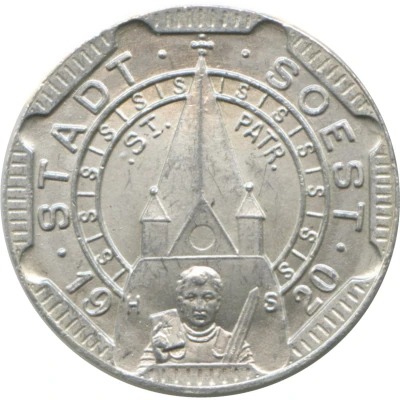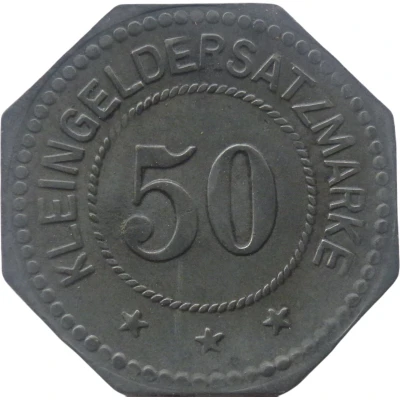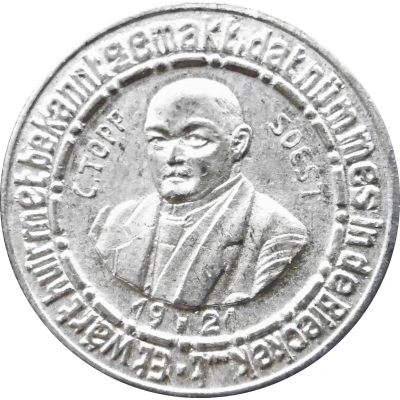


© tolnomur (CC BY-NC-SA)
50 Pfennigs - Soest
1920 year| Aluminium | 1.5 g | 24.1 mm |
| Issuer | City of Soest (notgeld) (Prussian province of Westphalia) |
|---|---|
| Period | Weimar Republic (1918-1933) |
| Type | Standard circulation coin |
| Year | 1920 |
| Value | 50 Pfennigs (50 Pfennige) (0.50) |
| Currency | Mark (1914-1924) |
| Composition | Aluminium |
| Weight | 1.5 g |
| Diameter | 24.1 mm |
| Thickness | 1.5 mm |
| Shape | Round |
| Technique | Milled |
| Orientation | Medal alignment ↑↑ |
| Demonetized | Yes |
| Updated | 2024-10-04 |
| Numista | N#49828 |
|---|---|
| Rarity index | 64% |
Reverse
Coat of Arms center top above denomination centers in text band
Script: Latin
Lettering:
50
∙PFG∙
Edge
Plain
Comment
Issuing agency: [Stadt, Westfalen].Interesting fact
One interesting fact about the 50 Pfennigs - Soest 1920 coin is that it was made of aluminum, which was a relatively new material for coins at the time. Aluminum was first used in coinage in the late 19th century, and it was still a relatively rare material in the early 20th century. The use of aluminum in coins was seen as a way to reduce the cost of production, as it was less expensive than traditional metals like silver and gold. The 50 Pfennigs - Soest 1920 coin is a unique example of the use of aluminum in coinage during this time period.
Price
| Date | Mintage | VG | F | VF | XF | AU | UNC |
|---|---|---|---|---|---|---|---|
| 1920 | - | - | - | - | - | - |
Values in the table are based on evaluations by sales realized on Internet platforms. They serve as an indication only for 50 Pfennigs - Soest 1920 coin.



